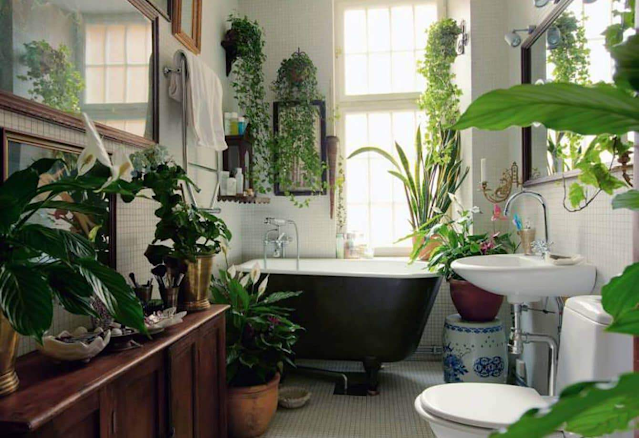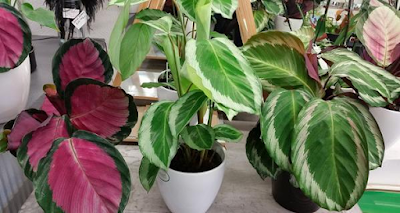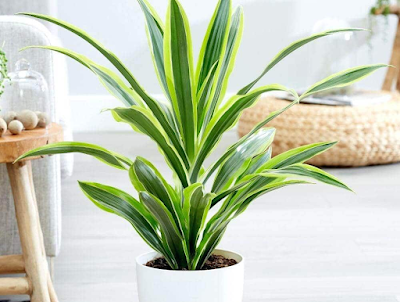When you mention the balcony or outside plants, it sounds absolutely normal, but what about bathroom plants that absorb moisture?
Isn't it unusual that this has happened?
Well, it shouldn't feel that way because we can have plants in our bathrooms just like we can keep them indoors or outdoors in pots.
Although most people prefer to use synthetic or artificial plants, living bathroom plants not only have the added benefit of absorbing moisture from the air but also adding color to your decor, cleansing the air, and boosting your mood and energy levels.
Are you unsure of the best plants for your bathroom?
You don't have to because I have done extensive study on ideal bathroom plants and will include the typical ones in today's article along with the important considerations.
Nice, huh? Let's get going.
Factors to consider while selecting your bathroom plants
Humidity
Every home's
bathroom is the area that is the most humid. Consequently, choose plants that can endure such conditions while choosing ones for your bathroom.
This list article will be useful to you because it offers a wide variety of bathroom plants that absorb moisture. You don't have to work up a sweat trying to figure out which plants can withstand humidity.
Lighting
Most people think they cannot keep plants in their restrooms since most, if not all,
bathrooms have low levels of light.
It shouldn't be like this.
There are several options for low-light bathroom plants, as you will discover in this post. Depending on the season, you may occasionally need to move the plants toward the sun.
Alternatively, you should consider using fluorescent bulbs to give your bathroom plants the desired light wavelengths.
Toxicity to humans and pets
Your
bathroom should not contain any plants that are poisonous to people or pets.
If you must have a plant that can injure family members, be sure that children and pets cannot get it. which, on occasion, is impractical, making their avoidance preferable.
safer to be safe than sorry.
Space
The size of your bathroom determines the free space available for keeping plants.
So, it is very important that you understand the growth habit of the plant as well as the space available before considering keeping it.
Big plants when fully grown will require more space and vice versa. Space is also a determining factor when selecting the plant pots. Here's a list of the best indoor pot planters and their sizes.
Temperature
Every bathroom has different temperature levels at different times of the day depending on the kind of showers taken (may be hot, warm or cold).
Therefore, it’s important to choose plants that can easily adopt to rapid temperature changes.
19 Bathroom Plants that Absorb Moisture
#1: Peace Lily (Spathiphyllum wallisii)
The main characteristic of a peace lily plant is its capacity to take up moisture from the air through its leaves. Therefore, this plant may live with little to no watering.
Additionally, because it requires less light to develop, it is the ideal choice for a bathroom plant. The peace lily's capacity to rid the air of all impurities makes it a smart choice to keep in your bathroom, as well.
However, if unintentionally consumed, this plant can also be poisonous. You should still maintain peace lilies in your
bathroom despite this. Just make sure the plants are out of reach for children and animals.
#2: English Ivy (Hedera helix)
The English ivy is a wonderful indoor plant that you can think about putting in hanging baskets in the bathroom. You may buy fantastic vertical hanging planters online and have your Ivy plant ready to go.
This plant is excellent for removing airborne contaminants, particularly formaldehyde, which is more prevalent in household goods including furniture, cleaning supplies, and carpet treatments.
You can also get rid of mold by using ivy, which thrives in damp environments.
If you consistently keep the soil/potting mix moist, English ivy is simple to maintain and requires nothing in the way of light.
#3: Mother In-Laws Tongue (Sansevieria trifasciata)
One of the most well-liked bathroom plants that absorbs moisture is this one.
Similar to the Ivy, it has the unique capacity to remove formaldehyde, a common ingredient in cosmetics and cleaning goods, from the air.
Mother-in-Tongue Law's can also endure high humidity and little light, just like other
bathroom plants.
#4: Spider Plant (Chlorophytum comosum)
Without a doubt, the Spider plant is one of the most amazing indoor
plants you can cultivate in your bathroom.
Its supple arching leaves enhance the overall aesthetic of your bathroom.
The ability of spider plants to remove up to 90% of pollutants and moisture from the air is one of their most astounding characteristics.
It distinguishes itself from the competition due to this special quality.
#5: Reed Palm (Chamaedorea spp)
Tropical and humid environments are believed to be the best for reed palm growth.
Which of these regions do you think is the best?
your lavatory
These plants are a fantastic option for your bathroom because they have repeatedly shown to be effective at absorbing excess moisture, purifying the air, and growing in low light.
#6: Boston Fern (Nephrolepis exaltata)
The Boston Fern is a houseplant that prefers moist soil and filtered light.
This plant has the ability to easily absorb extra moisture from your bathroom, a quality that makes it possible for it to balance the humidity levels and make your bathroom more comfortable.
However, water your fern more frequently, especially during the harsh winters, as
plants might perish when the air becomes too dry. Misting is suggested in this situation.
#7: Zanzibar gem (Zamioculcas zamiifolia)
There are several names for this plant, including ZZ plant, Zuzu plant, aroid palm, eternity plant, and emerald palm.
The Zanzibar gem plant can withstand any growing conditions, including poor light, excessive humidity, low water levels, and abrupt temperature fluctuations. It is practically indestructible.
Only four times a year are waterings required for this bathroom plant. Its beautiful oval leaves will adorn your bathroom for a very long time.
#8: Cast Iron Plant (Aspidistra elatior)
This bathroom plant doesn't require much watering unless the soil or potting mix is overly dry because it performs a wonderful job of absorbing excess moisture from the air.
The cast iron plant can withstand temperatures between 10 and 27 degrees Celsius and requires little light.
#9: Bird's Nest Fern (Asplenium nidus)
The finest plant for your bathroom is another another.
It enjoys dim lighting and the added moisture that your bathroom may offer. These circumstances cause the Bird's Nest Fern to grow large and have lovely dark leaves that enhance the beauty of your bathroom.
However, as it will eventually get bigger, you'll need ample room to plant Bird's Nest Fern.
#10: Pothos (Epipremnum aureum)
Pothos is a resilient, low-maintenance plant that can thrive in most environments; as a result, it is occasionally referred to as a "cubicle plant." The excessive humidity in your bathroom won't harm it.
Additionally, it can survive dim lighting and erratic watering regimens.
Fast-growing and flourishing, this bathroom plant, especially when draped from the shower curtain pole, develops into a lovely hanging vine.
#11: Orchids (Phalaenopsis spp)
Orchids prefer dim light, comfortable temperatures, and a little humidity.
They offer exotic beauty to your bathroom and produce lovely blooms for several months if properly cared for.
#12: Baby’s tear (Soleirolia soleirolii)
An elegant, delicate creeping herb that is bright green and trails over wall planters or hanging baskets.
It favors dampness and shadow, so restrooms with little natural light are the perfect place for it to grow.
#13: Tillandsia (Tillandsia spp)
Like many other bathroom plants, tillandsia thrives in low light and can take up extra moisture from the air through its leaves.
One more to complement your bathroom's design.
#14: Calathea (Calathea spp)
Calatheas do well in most bathrooms since they respond well to humidity and can stand incandescent light.
These plants provide a touch of sophistication and color to your bathroom.
#15: Dracaena (Dracaena fragrans)
Since dracaena needs a lot of humidity, the bathroom is really the best place for it.
Although they can also handle low light, these plants can grow even more successfully in an environment with medium to high indirect light.
#16: Aloe Vera (Aloe barbadensis miller)
The humidity in your bathroom will be just right for this succulent plant, which requires little water and less sunlight.
Aloe Vera is not only beautiful for your bathroom, but it is also quite helpful, especially when sunburns, cuts, or bug bites require quick relief.
#17: Azalea (Rhododendron spp)
The Azalea is the bathroom plant that yields the most exquisite blossoms. Their red, pink, white, and purple blooms give your bathroom a sweetly lovely appearance.
Similar to the bathroom, these plants do best in warm, humid settings.
#18: Begonia (Begonia spp)
Numerous varieties of begonia thrive in containers and like the dampness and warmth of a bathroom shelf.
Begonias thrive inside and are exceptionally vibrant ornamentals.
#19: Philodendron (Philodendron bipinnatifidum)
Philodendrons are low-maintenance plants that thrive in restroom settings.
Some philodendron species trail or vine, while others grow several feet vertically. By shedding its leaves, this plant has a unique method of communicating whether you have overwatered or underwatered it.
Philodendrons require direct, bright light. Be sure to set them on a windowsill covered with curtains.
Bonus: Bromeliads
Many types of epiphytic bromeliads thrive in the humidity of bathrooms.
They are able to obtain the majority of their moisture from the atmosphere. Bromeliads dislike being in moist soil and like bright, indirect light.
Conclusion
I hope that the post on 19 bathroom plants that absorb moisture you just read has significantly changed your opinion about whether or not to keep plants in your bathroom.
The significance of having
plants in your bathroom is discussed in the article. These include, among other things, improving the look of the bathroom and air purification.
You've also discovered that while choosing one, you should take into account factors like illumination, available space, the tolerance of people, animals, and plants to humidity and temperature.
Now it's your opportunity to add plants of your choosing to enhance the beauty and comfort of your bathroom.
Read Article:






















Comments
Post a Comment